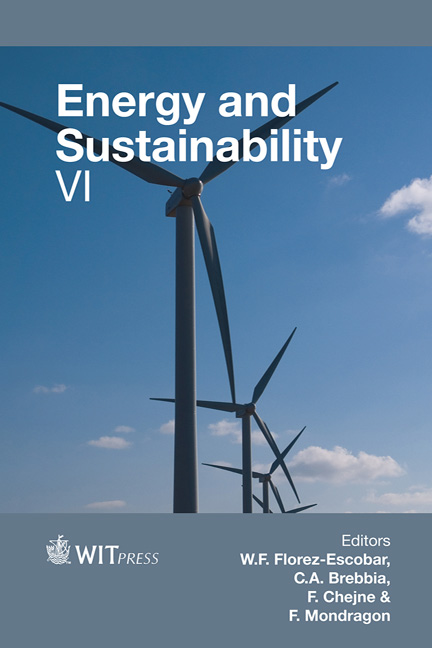Analysis Of Large-scale Integration Of Renewable Energy Sources In The Mexican Electricity System
Price
Free (open access)
Transaction
Volume
195
Pages
13
Page Range
449 - 461
Published
2015
Size
1,451 kb
Paper DOI
10.2495/ESUS150381
Copyright
WIT Press
Author(s)
J. J. Vidal-Amaro, P. A. Østergaard, C. Sheinbaum-Pardo
Abstract
The Mexican electricity consumption is highly based on fossil fuels. In 2012 only 15% of the electricity generation was produced using renewable energy sources (RES) and most of the new installed capacity during the last decade has been based on combined cycle power plants. On the other hand, Mexico is a land of ample opportunities for renewable energy exploitation that could lower its dependency on fossil fuels. Recently, the Mexican Congress approved a regulation limiting fossil fuel-based electricity generation to 65% by the year 2024, to 60% by 2035 and to 50% by 2050. In this work we investigate the potential for renewable energy integration into the Mexican electricity system. We construct three scenarios (low, mid and high biomass) for achieving the 2024 target and analyse the electricity system response to varying contributions of wind and solar power production to the scenarios. The minimum complementary capacity based on fossil fuels needed to cover the demand without electricity imports is also assessed. Results indicate that within each scenario several combinations of bio, wind and solar power make a minimum of 35% RES electricity production possible. However, in every scenario there is only one combination resulting in the minimum overall capacity. Biomass has the highest effectiveness in terms of high RES production with the lowest needed overall power generating capacity.
Keywords
energy systems analyses, EnergyPLAN simulation, renewable energies, electricity system, Mexico





